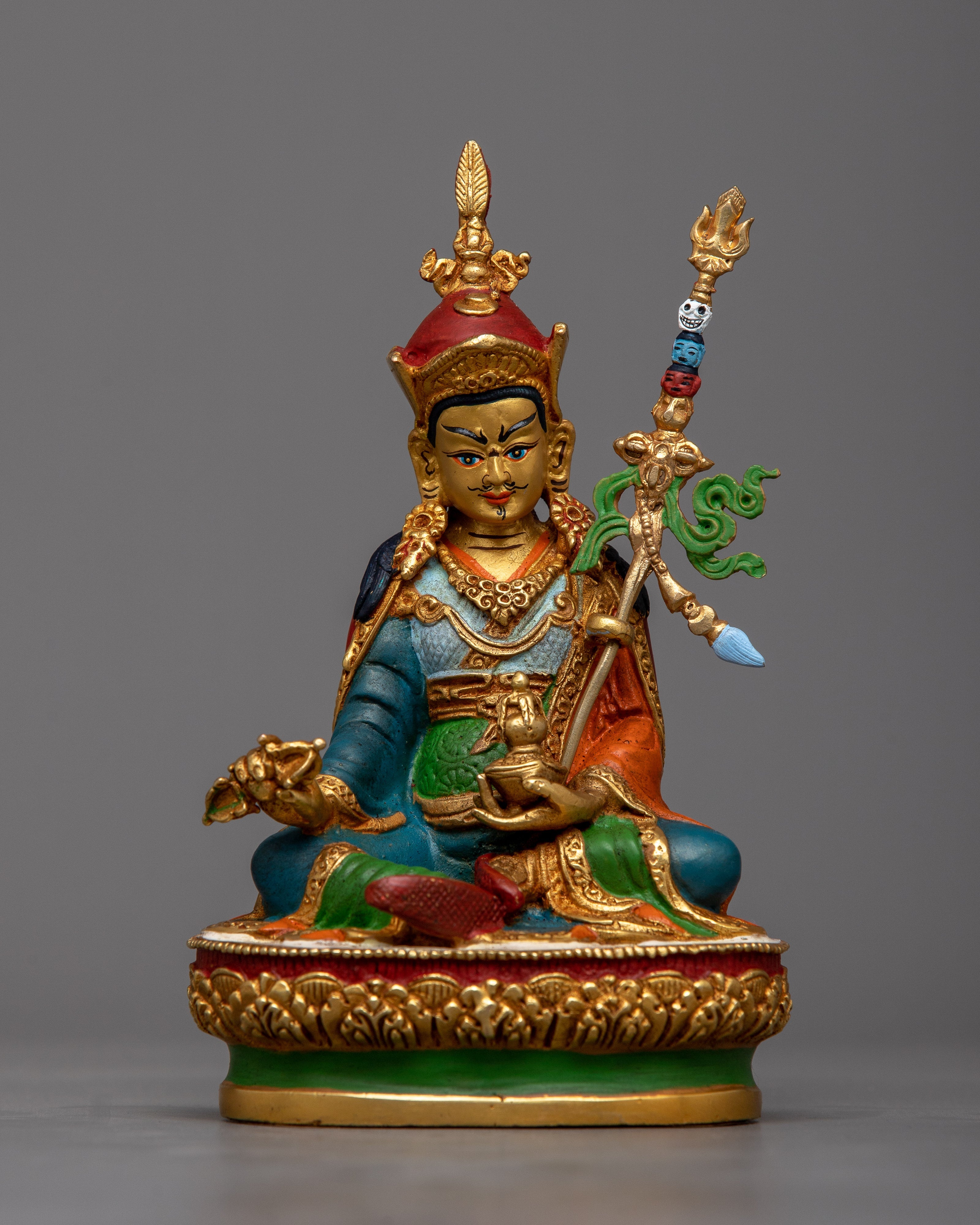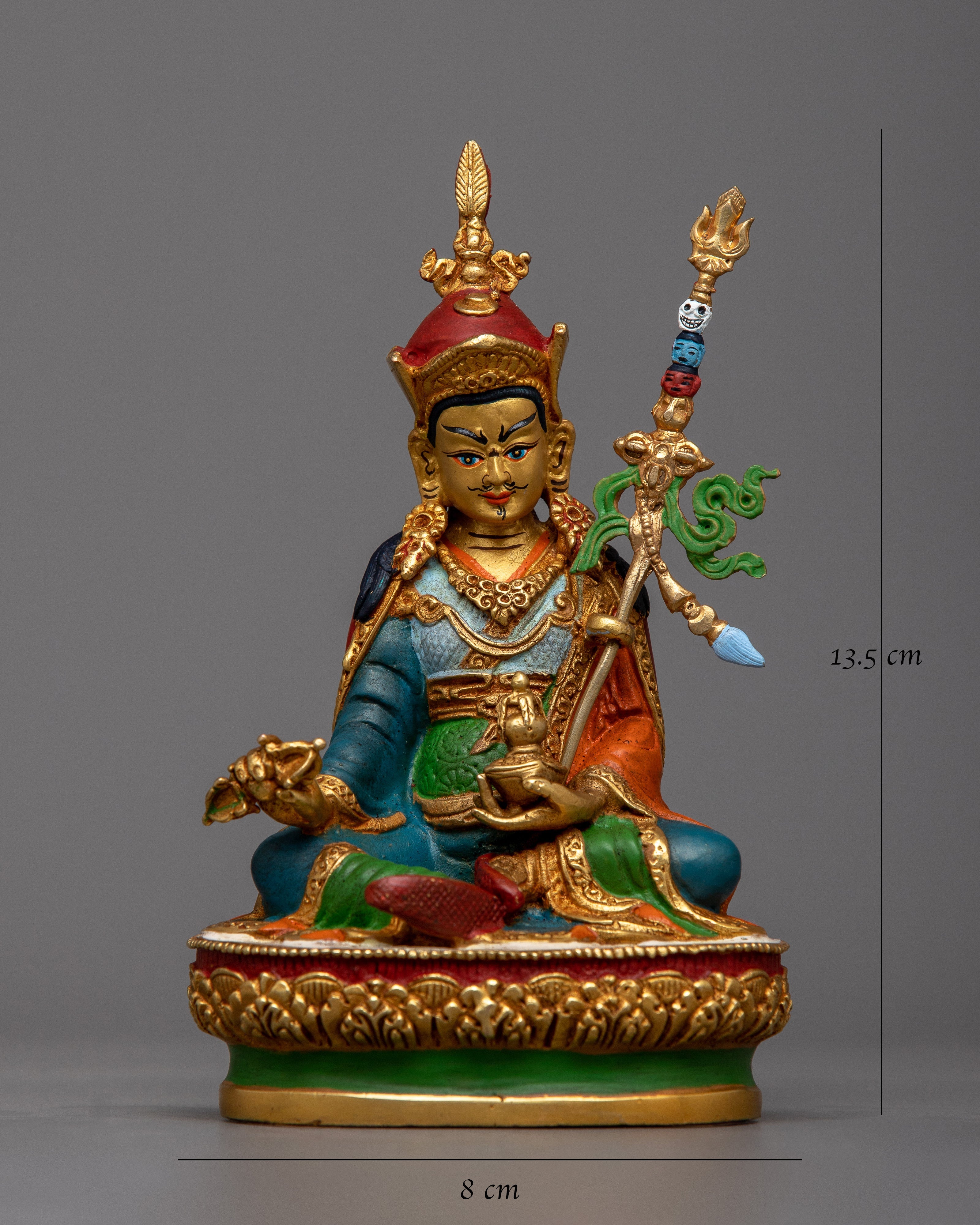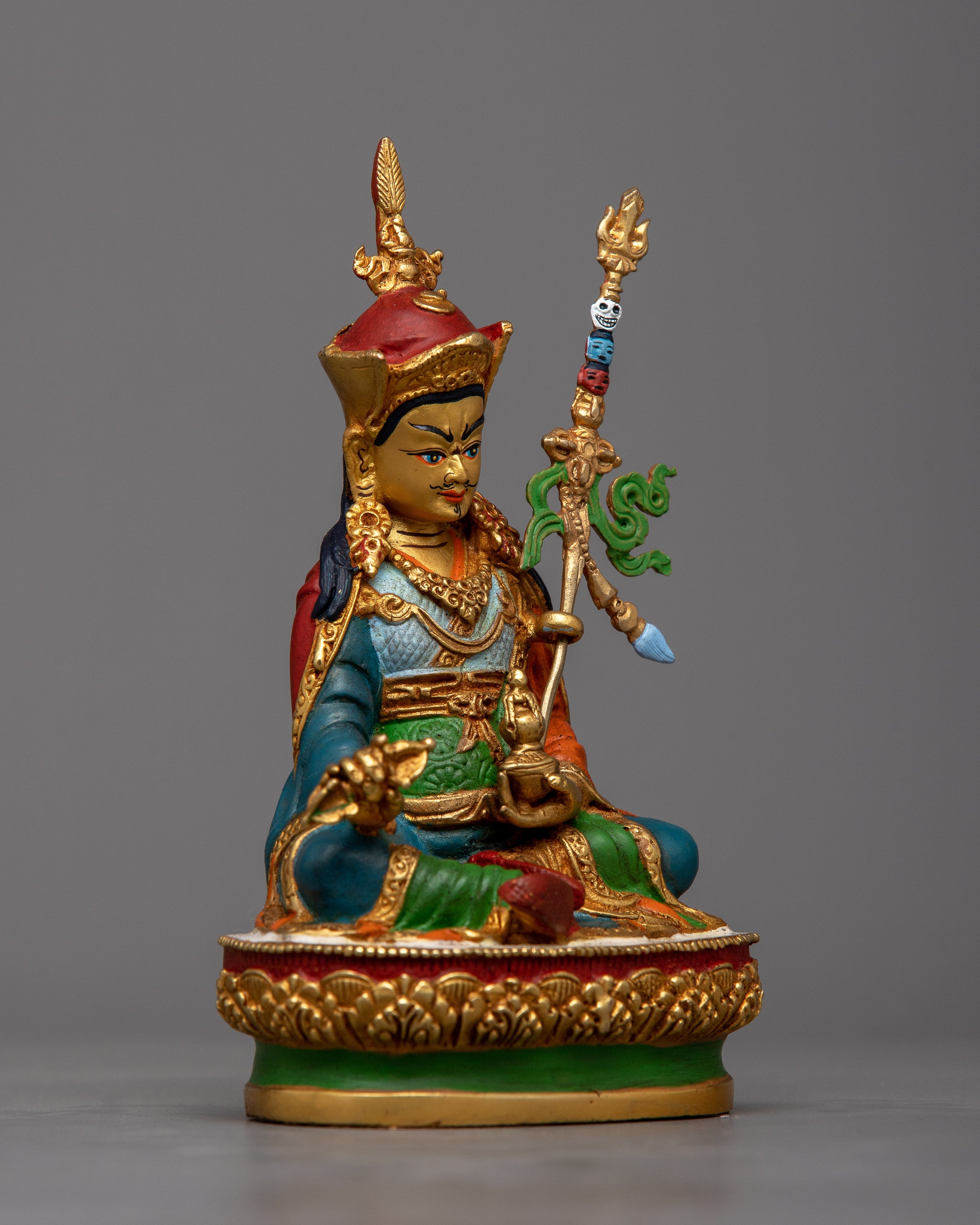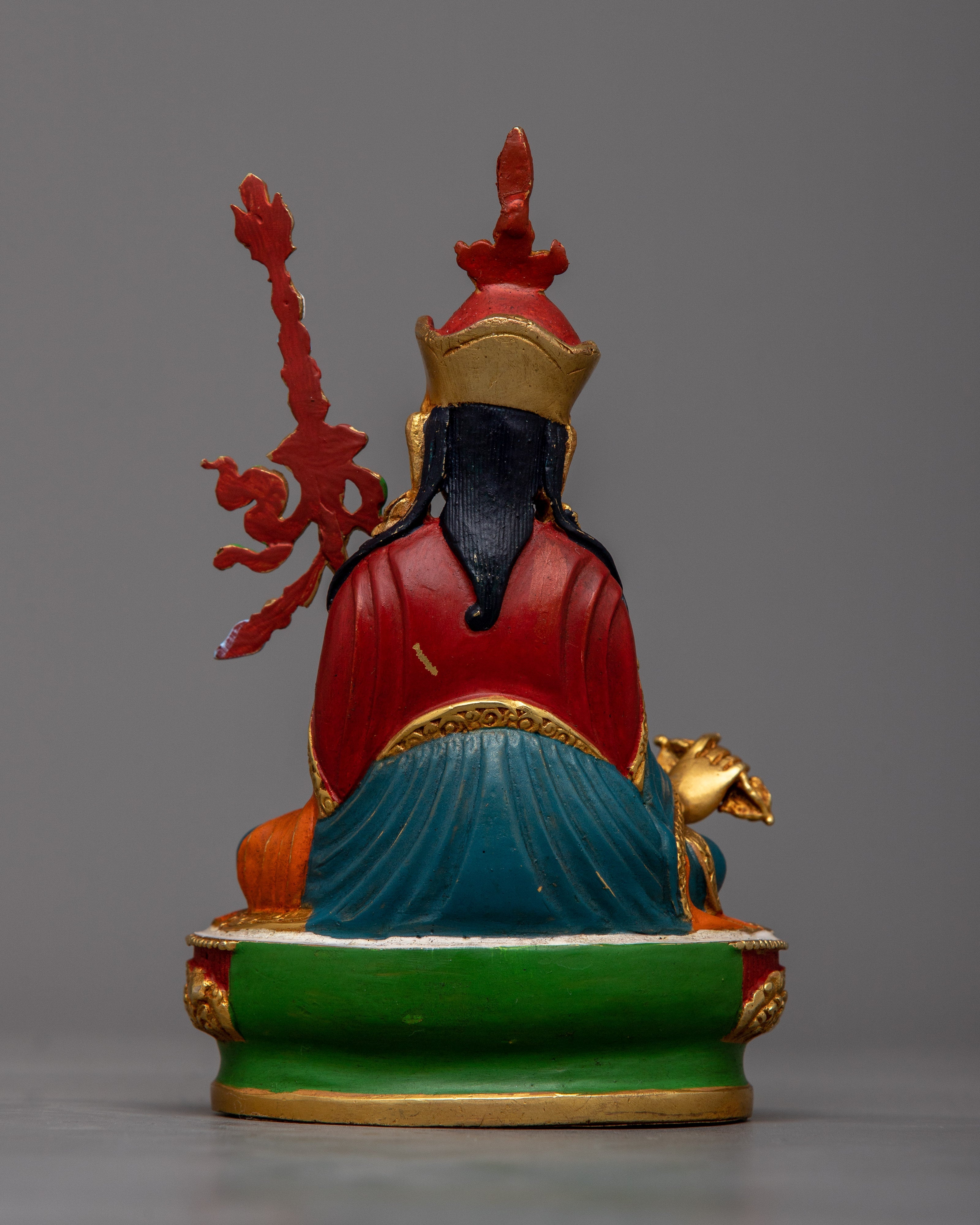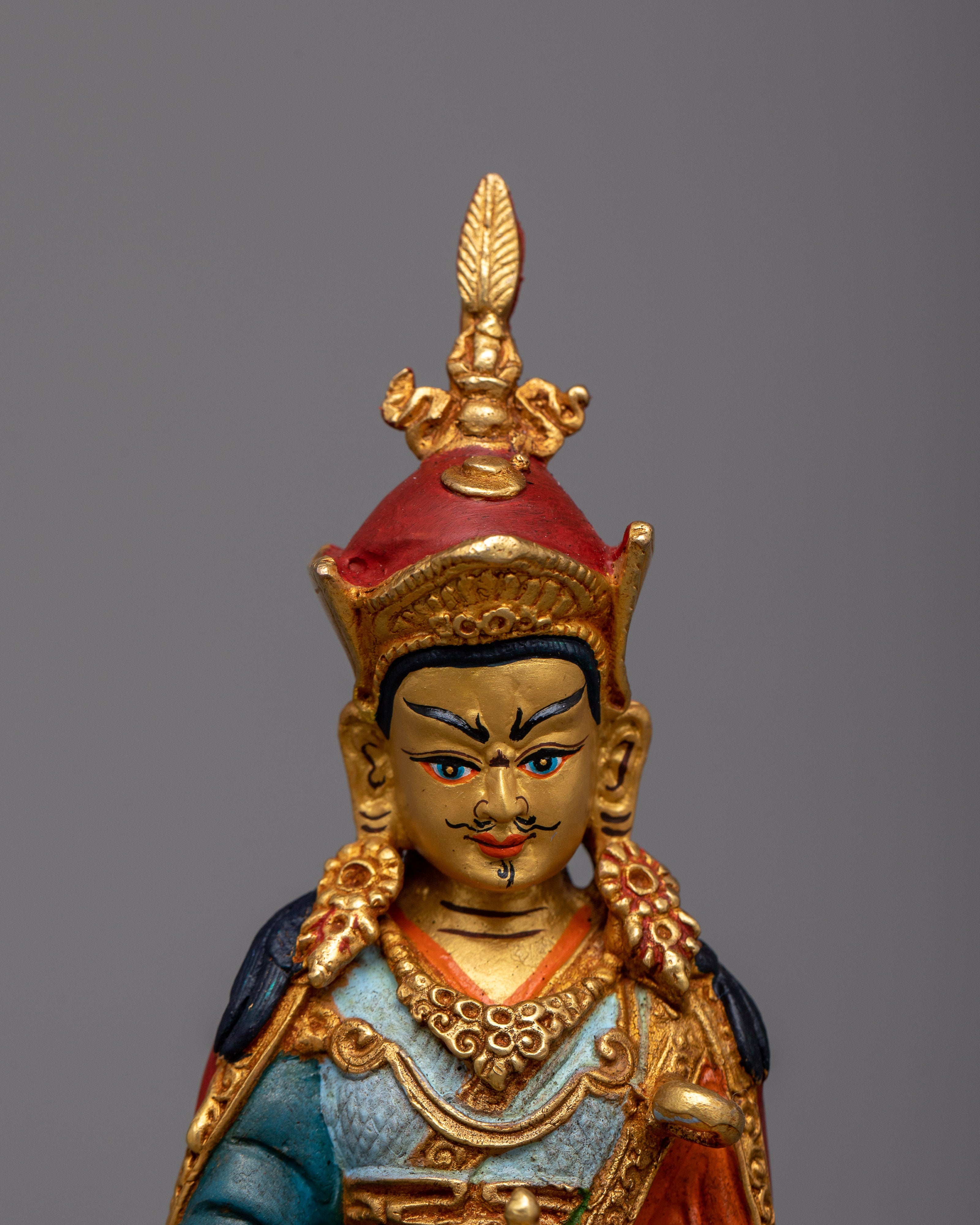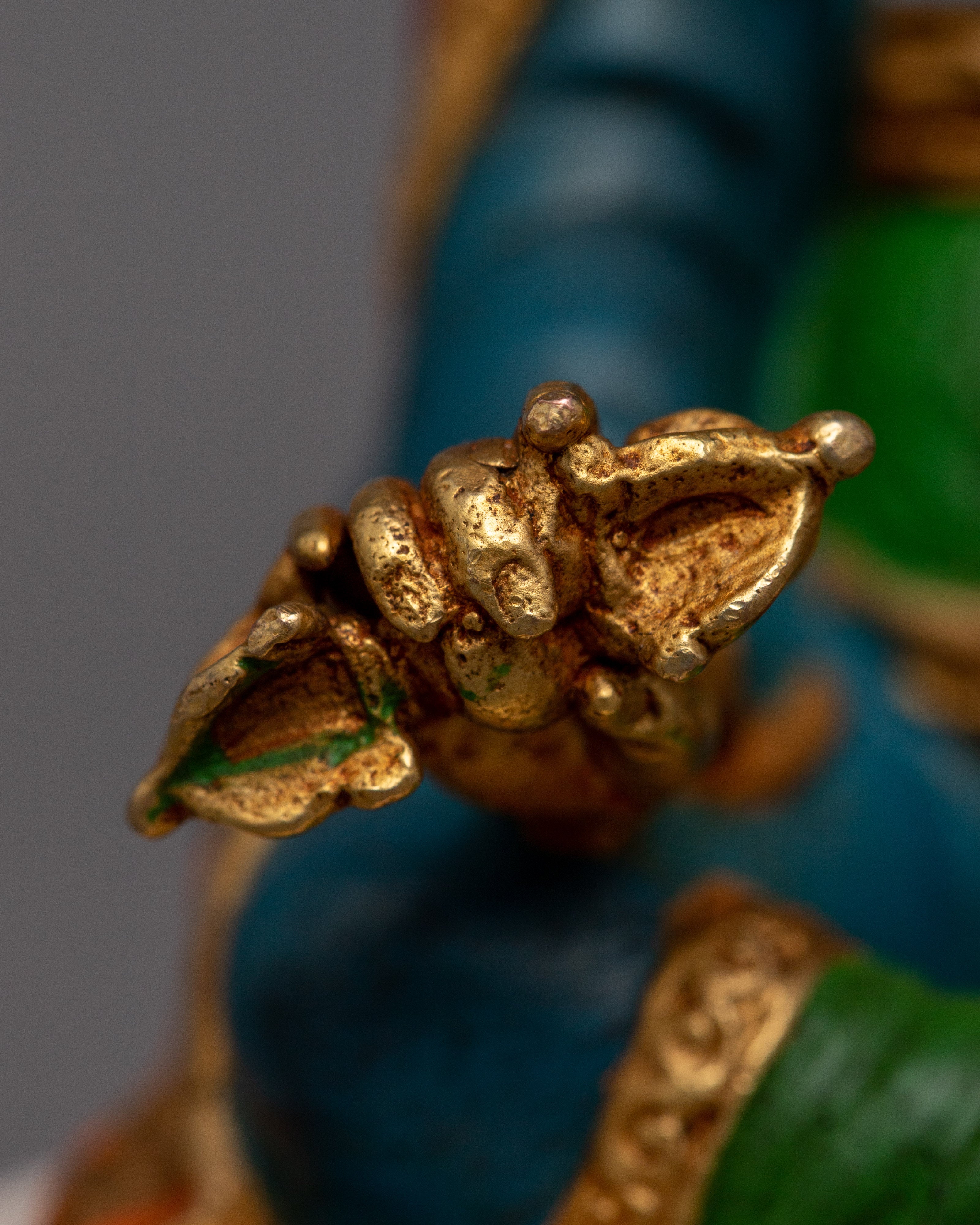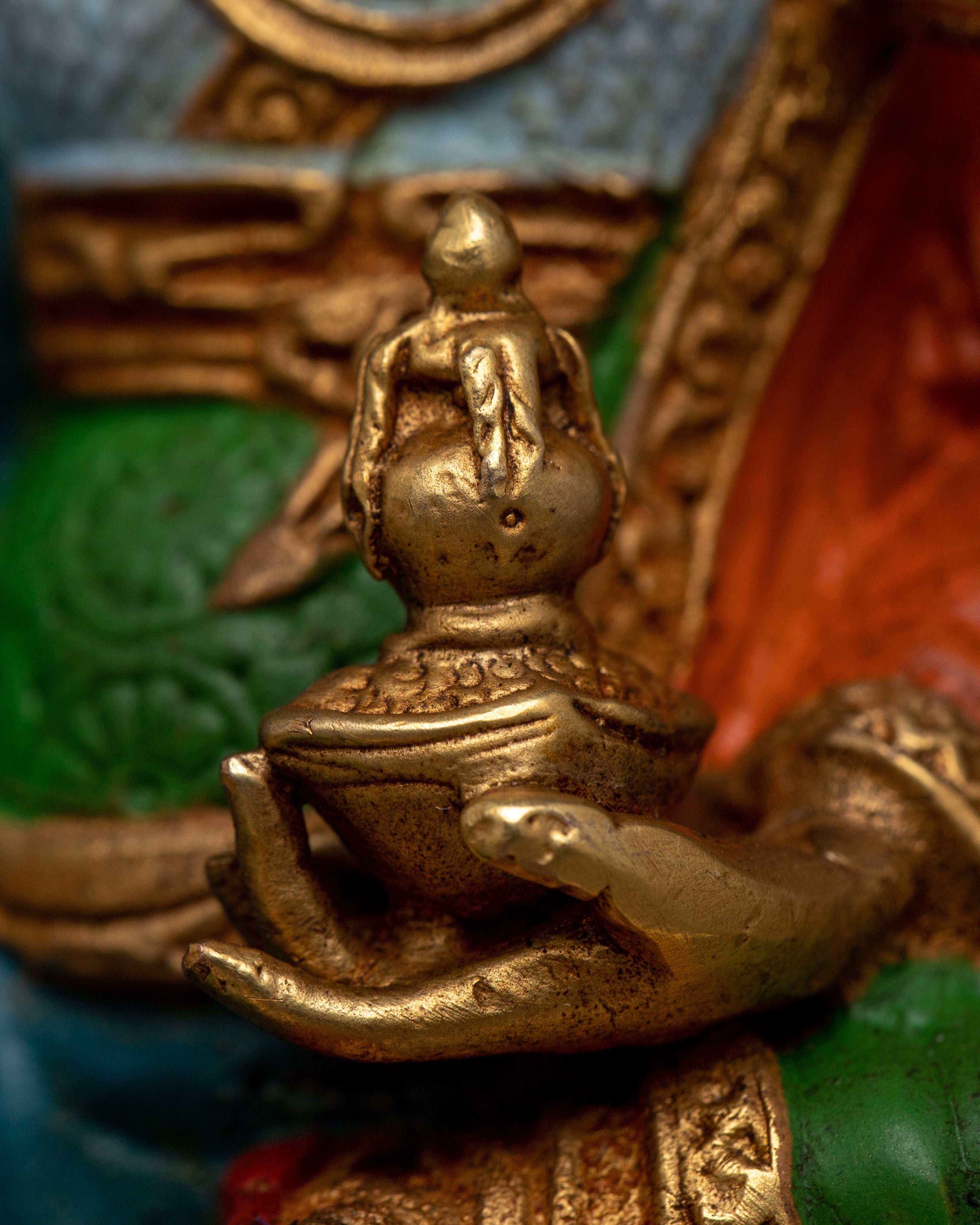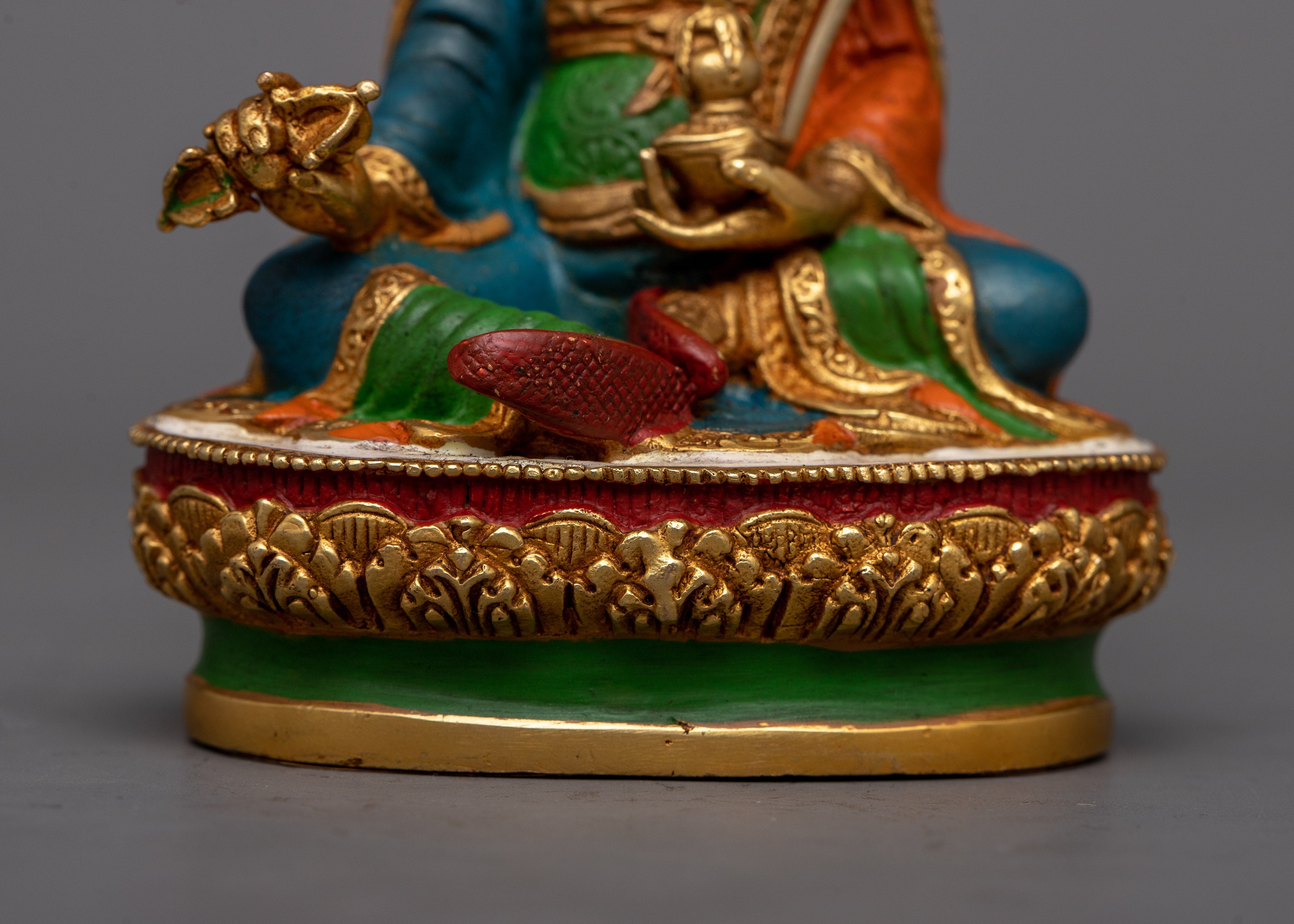Description
Cooper Guru Rinpoche Statue
About Our Statue :
Renowned as the "Second Buddha" in Tibetan Buddhism, Guru Rinpoche, also known as Padmasambhava, is magnificently portrayed in the Copper Guru Rinpoche Statue. This statue, which was carefully crafted on a copper body using sophisticated machine techniques, is proof of Guru Rinpoche's heavenly presence. With its opulent 24k gold plating, it exudes a sense of spiritual holiness and respect.
Intricate acrylic paintings that adorn the statue further accentuate its exquisite beauty by giving its features more depth and brightness. Devotees are encouraged to engage with Guru Rinpoche's teachings and blessings by the exquisite detail depicted in his tranquil expression and noble presence. The Copper Guru Rinpoche Statue is a powerful symbol of knowledge, compassion, and enlightenment that may be used in a shrine room or meditation area. It invites practitioners to develop a closer relationship with the enlightened master and to enhance their spiritual practice.
Introduction To Guru Rinpoche :
Guru Rinpoche was an instrumental figure in Tibetan Buddhism. In Tibetan Buddhism, Padmasambhava's teachings are said to have an oral lineage (kama) as well as a lineage of the hidden treasure texts (termas). He is said to appear in visionary encounters to tertöns, and his form is visualized during guru yoga practice, particularly in the Nyingma school. Buddhists revere him in Tibet, Nepal, Bhutan, India's Himalayan states, and other countries worldwide.
---------------------------------------------
Size: 13.5 cm (Height) x 8 cm (Width)
Weight:0.43 kg
---------------------------------------------
How do you take care of your statues?
• Place them at room temperature, avoiding direct sunlight.
• Make sure that the area where your statue is placed is entirely free of moisture and dust.
• Place it at the highest place on your altar after being consecrated by Lama/monks. The best practice is to keep them covered inside a glass cabinet.
• Do not use your bare hands or any objects with a rough surface to wipe the face. Directly touching with the bare hand objects can smudge the face, leaving scratches.

